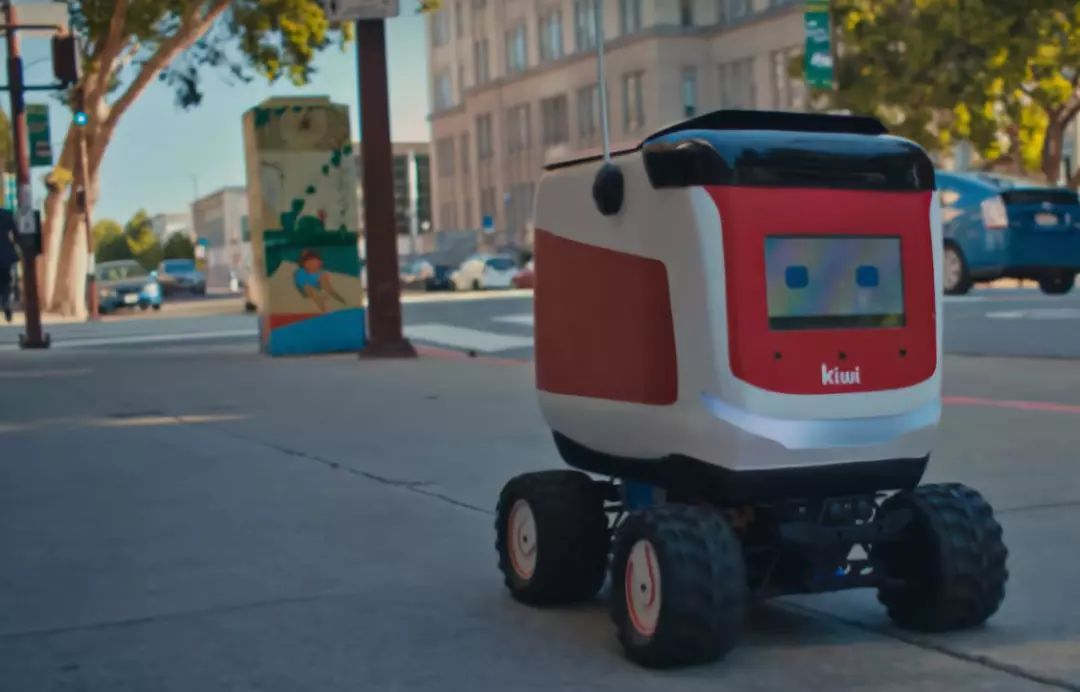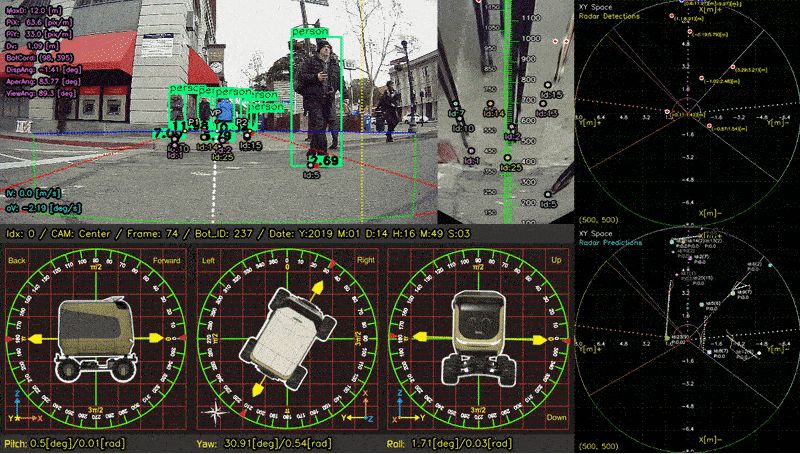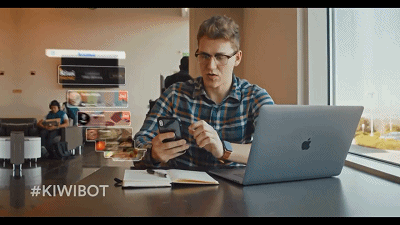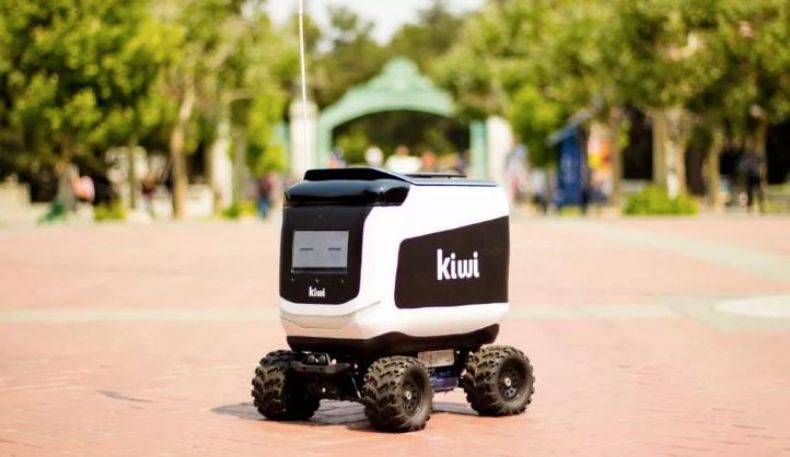So after 5G communication is popular, can it go out of school?
Editor’s note: This article is from WeChat public account “machine heart” (ID: almosthuman2014), author: Synced. (Original title: Hiring labor to pretend to be AI? Campus take-out robots are remotely manipulative, hourly wages of $2)
Kiwibot, a “star” takeaway robot active on the campus of the prestigious UC Berkeley campus, although it looks like Autopilot, in fact, employs real people who are far away in Colombia for remote manual manipulation.
Recently, startup Kiwibot has also fallen into the whirlpool of public opinion that uses real people to impersonate AI.
According to people’s surveys, this seemingly sci-fi take-out robot is not as highly automated as we think – they are all remotely controlled by real people.
But these operators are far from Colombia in South America, and each of them can control up to three robots, each of which earns only $2 an hour.
In today’s rapid development of artificial intelligence technology, various types of AI startups have sprung up. However, it is not uncommon to use real people to pretend to be AI and sell fake concepts to obtain financing.
Not long ago, using Indian code farmers The AI-based startup Engine.ai was exposed by The Wall Street Journal.
However, in terms of the current financing amount, the company that built kiwibot has not yet gotten too much money because of the concept of selling AI.
Another star startup that fakes AI?
The delivery robot that broke the fake AI came from a Columbia startup called Kiwi Campus, formerly the CEO of the company, Feli.Pe Chavez started a courier service in Bogota, Colombia, in 2015.
In 2016, he founded Kiwi Campus at the University of California with Jason Oviedo (Kiwi Campus CTO) and Sergio Pachón (Kiwi Campus current COO).
They found that if they ordered a pizza on the US campus, the manual delivery fee was almost as high as the price of the pizza itself, so they decided to try to use the robot to deliver the meal.
But they found that the entire delivery process from the restaurant to the consignee with a single robot was very inefficient and decided to assign the delivery task to different robots.
Kiwibot robots began delivering food on Berkeley’s campus in March 2017, and expanded to Stanford University in early 2018, and later plans to expand into Palo Alto, San Jose, Los Angeles and other cities.
In November 2018, the company’s CEO Chávez received the MIT Outstanding Entrepreneur Award.
According to the Hong Kong Economic Times, the company’s team is about 60 people, about 6 adult hands in the back of the Colombian team operations, 40% in the United States responsible for business development and support.
The company’s current investors are primarily Skydeck incubators at the University of California at Berkeley, and have now completed seed round financing.
According to Crunchbase data, Kiwi Campus’s latest financing is $2 million.
“We never said that KiwiBot is self-driving”
Kiwibot became famous on the Berkeley campus. These robots for serving food are now an integral part of the campus. At Berkeley, there are currently about 40 “certified” robots serving students every day.
In Kiwibot’s promotional video, we can see that its developers have introduced the advancement of this tool:
It can use a complex machine vision system to identify the surrounding environment, avoid obstacles, and automatically determineCan you cross the road?
According to KiwiBot’s official website, the official website did not mention that the robot is self-driving, but the official did not give any explanation as to whether someone controlled this.
The original words are:
“We’re mastering human-robot interaction.” (simplified human-computer interaction)
Kiwibot’s obstacle avoidance control process.
According to overseas media Xataka, these embarrassing robots are actually monitored and operated by operators in Colombia relying on GPS signals and cameras to send instructions to the robot every 5 to 10 seconds. .
In particular, humans and machines work together during driving:
Kiwibot uses radar sensors, cameras and built-in image processing systems to identify road boundaries and avoid obstacles.
At this time, Bogota, 3,800 miles away, is also monitoring these robots to help them pass through complex road conditions without too far from the destination.
This is completely different from the service model provided by the traditional manpower distribution company, and of course, the labor cost can be greatly reduced.
Kiwibot believes that this type of remote control that is involved is a “parallel automatic” system.
These robots run at a very slow rate (1.6-2.4km/h) on campus, and they are taken out by human employees at designated locations in the restaurant, placed in the robot’s delivery bin and deployed.
In terms of cost, each running Kiwibot robot costs $2,500, and the reason why the cost does not swell is that they do not use high-performance sensors such as LiDAR, but use manpower – an operator who earns $2 an hour.
In fact, for people living in Bogota, Colombia, if you work 8 hours a day and work 20 days a month, the job is actually more than the average income level (about $310, 2019). Slightly higher.
In addition, similar to domestic shared bicycles, Kiwibot robots also need to be deployed by human-driven vehicles due to the imbalance of transportation flow.
Kiwi’s manual dispatchers can transport up to 12 Kiwibots at a time, which greatly improves distribution efficiency.Making distribution services less expensive gives Kiwibot a greater competitive advantage.
But in the final analysis, Kiwibot does not provide a one-to-one, fully automated meal delivery service, which still requires manual operation.
Kiwibot robots on the campus
Kiwibot has become a landscape of the university campus after its launch, and its delivery service has been well received.
According to the official website, since its inception in 2017, Kiwibot robots have completed 30,000 delivery services, built more than 150 robots, and are currently serving students at major universities.
The service is priced at US$3.8, and the monthly payment is US$15. You can enjoy unlimited meals. The most popular customers will call 3 to 5 takeaways every day.
In addition, it is reported that the average meal delivery time of this robot is about 30 minutes, which seems to be comparable to the domestic takeaway brother.
The KiWi Food Delivery Robot includes three types of robots, Kiwi RestaurantBot, Kiwi Trike and KiwiBot, for robotic joint delivery.
Among them, KiWi RestaurantBot is responsible for collecting foods that need to be delivered for delivery in the restaurant; 
KiWi Trike, a semi-automatic tricycle that receives food from the “Restaurant Robot”.
After picking up the food, KiWi Trike drones to the destination.
KiWibot is responsible for the last mile of delivery.
KiwiBot for the last mile food delivery service.
In addition to the food delivery, the Kiwibot robot also has a delivery function. The otaku house girl only needs to place an order at the Kiwibot APP, so they can buy school supplies and snacks without leaving home.
Of course, there are certain risks associated with using robots to deliver meals.
For the convenience of movement, the design of the Kiwibot robot is relatively small, but this physique is also relatively easy to be stolen.
In May of this year, the California police cracked a Kiwibot robot “kidnapping case.”
The “criminal suspect” is a substitute teacher, and the reasons given by him are:
“It’s annoying that this robot is hanging out on the street,” so he put it in his car trunk.





